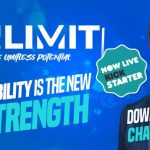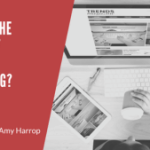 Curiosity is one of the strongest emotions in the world. It’s the feeling that compels us to probe and keep searching for answers to all of our most important questions.
Curiosity is one of the strongest emotions in the world. It’s the feeling that compels us to probe and keep searching for answers to all of our most important questions.
Who, What, Why, When, Where and How?
When it comes to creating your content and promoting your books, curiosity works as a trigger to get your prospects to take the actions you want them to take.
It accomplishes this feat by creating a break or discontinuity in their minds that is psychologically powerful. It puts space between what they know and what they want to know.
Approached systematically and by using the right triggers with the right audience, the “curiosity gap” is very effective for getting readers to move through any sales funnel you set up to sell your books.
It’s like baiting a trap (humanely of course), luring your prospects in and capturing them when they least expect it.
The best part about integrating curiosity into your book marketing strategy is that it can be used throughout every stage of your buyers’ journey.
- In blog posts (on your own site and as a guest blogger).
- In emails to your lists.
- With social media accounts.
- In book cover designs.
- In sales page descriptions.
If you spend the time to figure out what makes your readers tick, it is relatively simple to harness the power of curiosity to get them hooked on what you have to say. Once the conversation is started, you can focus on building a relationship with your prospect.
Keep them moving through your funnel towards the ultimate goal – a book sale.
There are several ways to use curiosity to surprise your audience and leave them intrigued.
Teach Them Something New
Want your prospect to sit up and listen to what you have to say?
Teach them something new and different.
Human beings have an innate desire to want to learn and do more. So, it’s natural to be attracted to people, books and blogs, that teach us something that we never knew, we never knew.
This is especially important today when most online content is run-of-the-mill, regurgitated and rehashed.
It’s not even, necessarily about teaching prospects about a new subject, but instead, teaching an old subject in a brand-new way.
When you can do that, a whole new world of communication opens up for you and your prospect.
Include Cliffhangers
Want to have your prospects at the edge of their seats, eagerly waiting to hear from you again?
Learn the art of the cliffhanger.
You literally want to leave your prospect hanging right in the middle of some of the juiciest and most delectable content you can share with them about your book or topic. Then, pick right back up from where you left off in your next book promotion piece.
It’s the art of withholding information until just the right moment. Do this all the way to the sale.
Create Contrarian Content
Internet users are inundated with content 24/7 and it’s gotten to the point where they are almost blind to it.
Today, if you want to get noticed you have to do something to stand out and make your readers really pay attention.
Try utilizing contrarian content.
It’s content that goes against the grain of what your reader has come to expect. In other words, content that goes against popular opinion.
What new, different and completely unexpected angle can you use to approach your topic that makes your prospect stop dead in their tracks and think…
What? No way! Tell me more…
A simple way to find out what grinds your audiences’ gears is to deep dive into comments on social media sites they frequent to listen in on the conversation, looking for potential triggers.
Leave a Trail of Breadcrumbs
When you are creating curiosity-based content, it’s important to remember to tease your audience with the information.
Give away just enough so they get a taste of what’s to come, but not so much that they feel like they “get it” and quickly move on to the next thing.
When you are creating content to promote your books, imagine leaving a trail of breadcrumbs for your audience members that leads them all the way to your desired destination, a purchase of your book.
Create Compelling Headlines
Your content headlines are perhaps the single most important element you can use to spark curiosity and get your prospects to click to find out more.
Studies show that the vast majority of people will go on to read a full-length article if its headline effectively pulls them in.
This is why some of the most prolific bloggers, writers and online marketers spend inordinate amounts of time creating their headlines. Some even go as far as creating a few dozen headlines before they settle on one that is the most compelling. That’s proof positive that headlines matter.
Take the time to draft and re-draft your headlines, because you never get a second chance to make a first impression.
Use Emotional Triggers
Every time you watch or read the news you see this tactic in action.
Psychological studies show that people are motivated more by thinking about what they have to lose than they are by thinking about what they have to gain.
Use this truth to play on your readers emotions. Give them a good reason to drop what they’re doing, read your content and find out more about how your book can help them now.
What scares your readers? What keeps them up at night? What are they afraid of losing?
If you can connect with your readers on an emotional level with the right triggers, you are most of the way to selling them a copy of your book.
Establish Continuity
Continuity is a powerful tool to use in your curiosity marketing arsenal.
Feel like the world is coming to an end when you miss the latest installment of your favorite TV series or movie franchise?
That’s continuity in action.
Once a loop is opened, it’s just human nature to want to close it.
That’s what compels us to binge watch our favorite shows on Netflix, three seasons at a time. And also, why dear aunt Mable has continued to watch her “stories” for the past three decades.
Keep the loop open, and keep them coming back for more.
With all of these tips for integrating curiosity into your marketing, there is one big caveat.
Never insult your readers’ intelligence.
If you take the time and effort to research your prospect thoroughly, craft hypnotic and compelling headlines and then your content falls flat and doesn’t add value, you end up with a reader who hasn’t discovered anything new and interesting as a reward for acting on their curiosity.
For this technique to be effective you have to overdeliver in your content, and ultimately, in your books.
Curiosity opens a loop that our psyche almost forces us to close. When curiosity about a subject is piqued enough, it can feel impossible to focus on anything else until the proverbial itch has finally been scratched.
If you aren’t using curiosity in your book marketing campaigns you are leaving money on the table.
Take advantage of this natural and universal phenomenon and watch in amazement at the results of being more intentional about sparking your prospects curiosity.
Use this psychological tactic to get them reading your blog posts, clicking your links, opening more of your email messages and ultimately buying more copies of your books.



